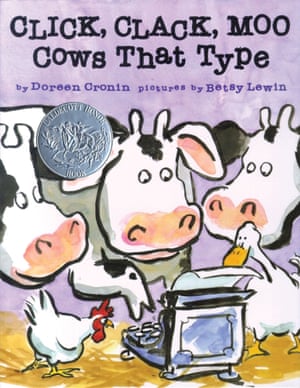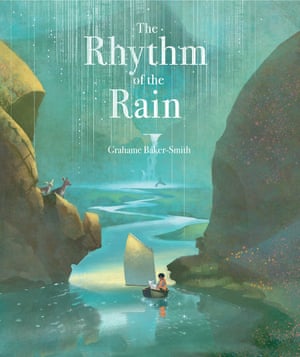Introducing younger readers to environmental emergency is a daunting task. Guardian Australia’s new kids’ books columnist Amelia Lush is here to help
When
I worked as a children’s bookseller, I received many requests from
parents, teachers and young readers for books that could help them
understand the destruction being wrought by climate crisis. While adults
were often seeking a tool that would allow them to explain the
frightening facts, it was children who sought advice on what could be
done to make it better.
Bookshops and libraries are the places people find themselves when countless solutions seem beyond reach. With news reports on droughts, ocean garbage patches and dwindling populations of bees sparking curiosity in children, books can be the best place to turn.
In November 2018, following the United Nations Climate Change
Conference, then 15-year-old Greta Thunberg initiated the school strike
for climate movement, which saw over 50,000 people from 100 countries
rally together in a call for action. Four months later, 1.4 million
students from around the world participated in school strikes. Children
are not only witnessing climate crisis but participating in protests and
carving out their own platforms to demand a voice.Bookshops and libraries are the places people find themselves when countless solutions seem beyond reach. With news reports on droughts, ocean garbage patches and dwindling populations of bees sparking curiosity in children, books can be the best place to turn.
Greta’s speeches, including her fierce calls to action at both the UN and UK parliament, have now been collected in a single volume entitled No One is too Small to Make a Difference. It’s a small but mighty manifesto on the destruction wrought by prior generations, and the drastic and immediate action required to protect future generations. Beyond her years, she simply states, “Homo sapiens have not failed yet … there is time to turn things around.”
Her first and hopefully not last contribution to literature is a great tool for school students to see one of their own demanding more from those in power. While Greta’s collection of speeches are better suited for students in years five and up, there are many books for younger readers that reflect her tenacity.
Click Clack Moo: Cows That Type – Doreen Cronin and Betsy Lewin
Simon & Schuster, ages 4+
Our Little Inventor – Sher Rill Ng
Allen and Unwin, ages 6+The innovation of youth is showcased wonderfully in Australian author and illustrator Sher Rill Ng’s stunningly illustrated story of a young inventor whose determination to clean the air of pollution in the town near where she lives is thwarted time and time again by adults who refuse to pay attention to her brilliant new invention.
The Rhythm of the Rain – Grahame Baker-Smith
Templar, ages 5+
Guiding children in their understanding of just how big the planet is, and that natural environments exist beyond what they have witnessed with their own eyes, can be a challenge, one made easier with the help of this exquisite new picture book. Baker-Smith introduces children to the water cycle, and the incredible connections that link all water on the planet. Opening with a young boy pouring a glass of water into his local river, we follow the water as it heads upstream, into the ocean, up among the rain clouds, returning to aid the growth of a single flower. A perfect harmony of lyrical language and landscapes of greens and blues, Baker-Smith’s book sets a tone of wonder and magic in nature.
Mallee Sky – Jodi Toering and Tannya Harricks
This timely release takes place in the Mallee in country Victoria, known to First Peoples of the land as Nowie, meaning Sunset Country. Harricks, an award-winning painter, invites the reader on a journey across wide-bellied landscapes of the Australian outback with her crafted use of oil paints. The gorgeous full-page illustrations provide a superb backdrop for Toering’s considered and poetic text.The Last Dance – Sally Morgan
Little Hare Books, ages 4+
A Planet Full of Plastic – Neal Layton
Hachette, ages 7+Did you know that we manufacture over 300 million tonnes of plastic every year? I didn’t until I read Neal Layton’s A Planet Full of Plastic. This is even more concerning when you realise eight million of those tonnes end up in our oceans. For the more factually minded child, A Planet Full of Plastic both tells the history of plastic invention, use and overuse alongside suggestions for how we can wean ourselves off it. Lively and informative text paired with Layton’s trademark mixed media collages will guarantee the message hits home.
Seagull – Danny Snell
Working Title Press, ages 4+
Photograph: Working Title Press
Danny Snell’s book takes this quintessential Australian bird that many children will have chased by the ocean and uses it to highlight the very real threat that garbage on the beach poses to local wildlife. Recounting the story of Seagull, who becomes grounded when some fishing line and plastic tangles around his foot, this is an accessible tale for younger children, and the perfect segue into a chat about the dangers of littering and single-use plastic to our marine wildlife.
Somebody Swallowed Stanley – Sarah Roberts and Hannah Peck
Expanding on the plastic theme is Someone Swallowed Stanley, a picture book by the animal behaviourist and environmental expert Dr Sarah Roberts. Giving life and personality to a small plastic bag, Stanley, who is definitely “not like the other jellyfish”, Roberts cleverly demonstrates how marine life, including turtles, sharks and squid, might mistake Stanley for food as he slowly floats down towards the sea bed.How to Save the Whole Stinkin’ Planet – Lee Constable and James Hart
Penguin Random House, ages 8+Did you know books on garbage can be laugh-out-loud funny? It can. Bear with me. How to Save the Whole Stinkin’ Planet by the TV presenter, science communicator, and Captain Planet devotee Lee Constable covers topics from compost to button mending and it’s packed with quizzes and science experiments you can do at home. This book succeeds masterfully in demonstrating to kids the many ways they can reduce their carbon footprint, while also having a good giggle.
Welcome to Country – Aunty Joy Murphy and Lisa Kennedy
Black Dog Books, ages 6+For young people to believe that they can be change-makers and caretakers of this planet, and to encourage the next generation of activists and environmental leaders, we start where all conversations should begin, with stories. It takes little encouragement for little people to make a stomping-big impact, and books are an easy introduction to make the most of their curiosity and compassion for the world around them and beneath them. As Murphy says: “You must only take from this land what you can give back.”

No comments:
Post a Comment